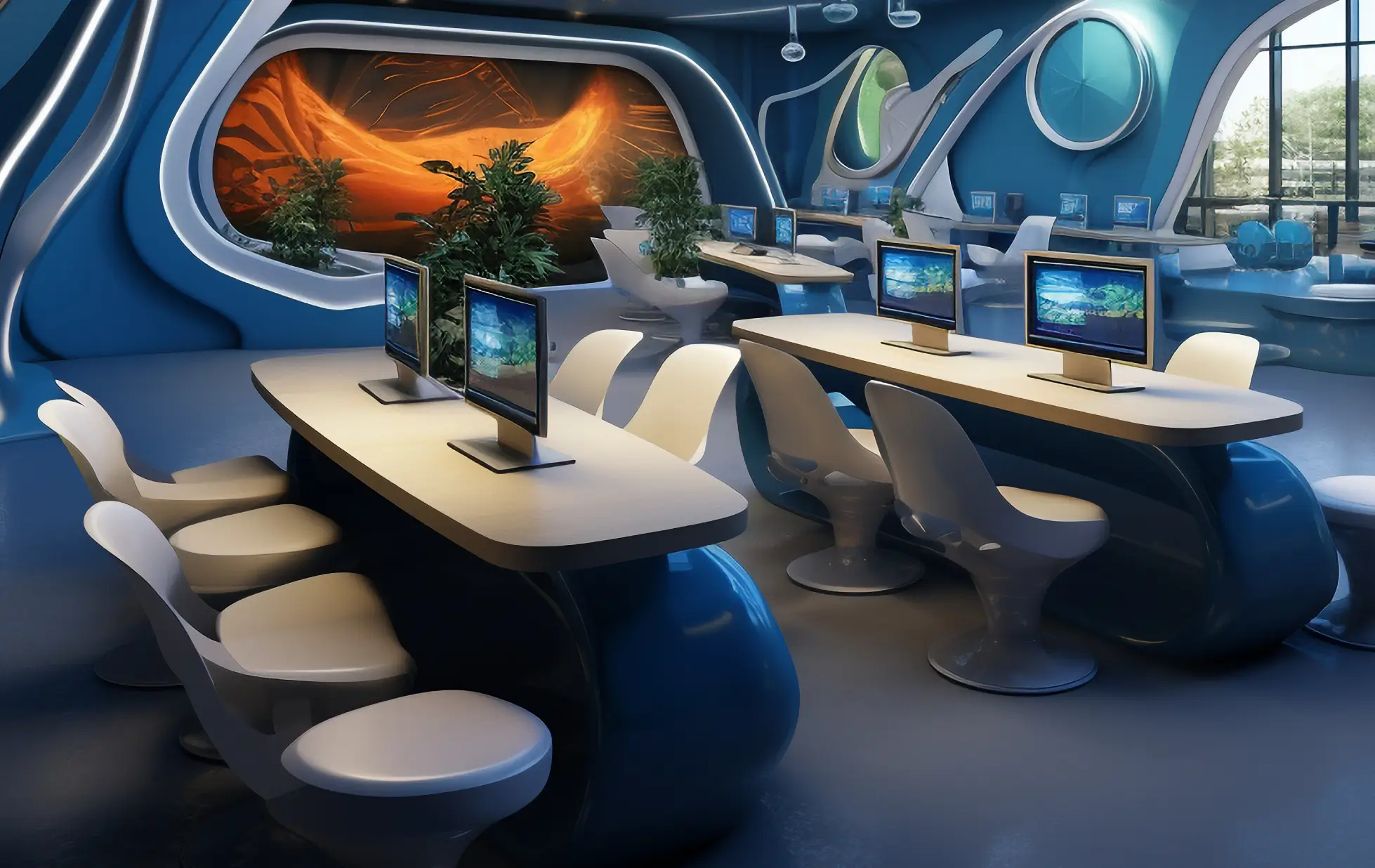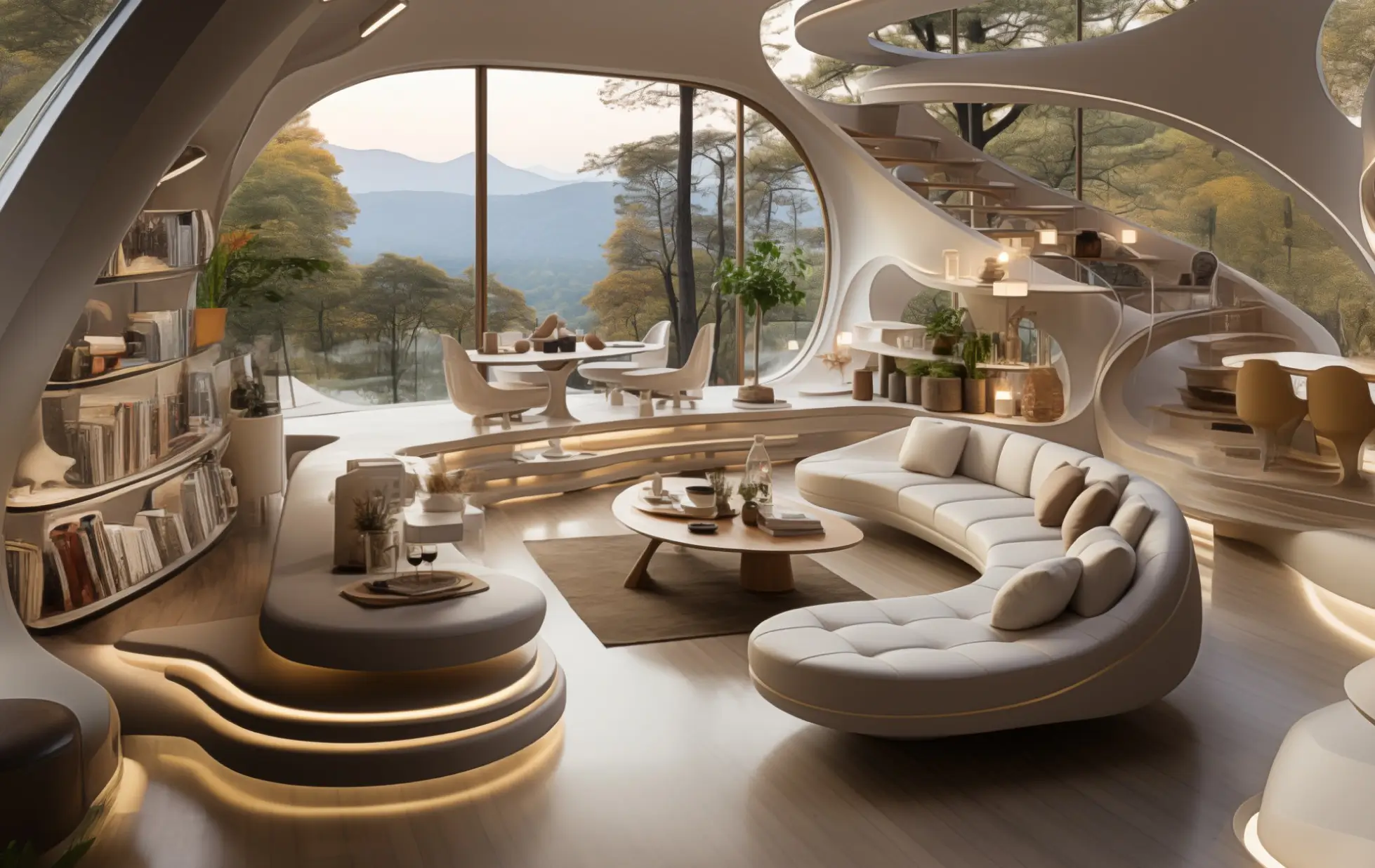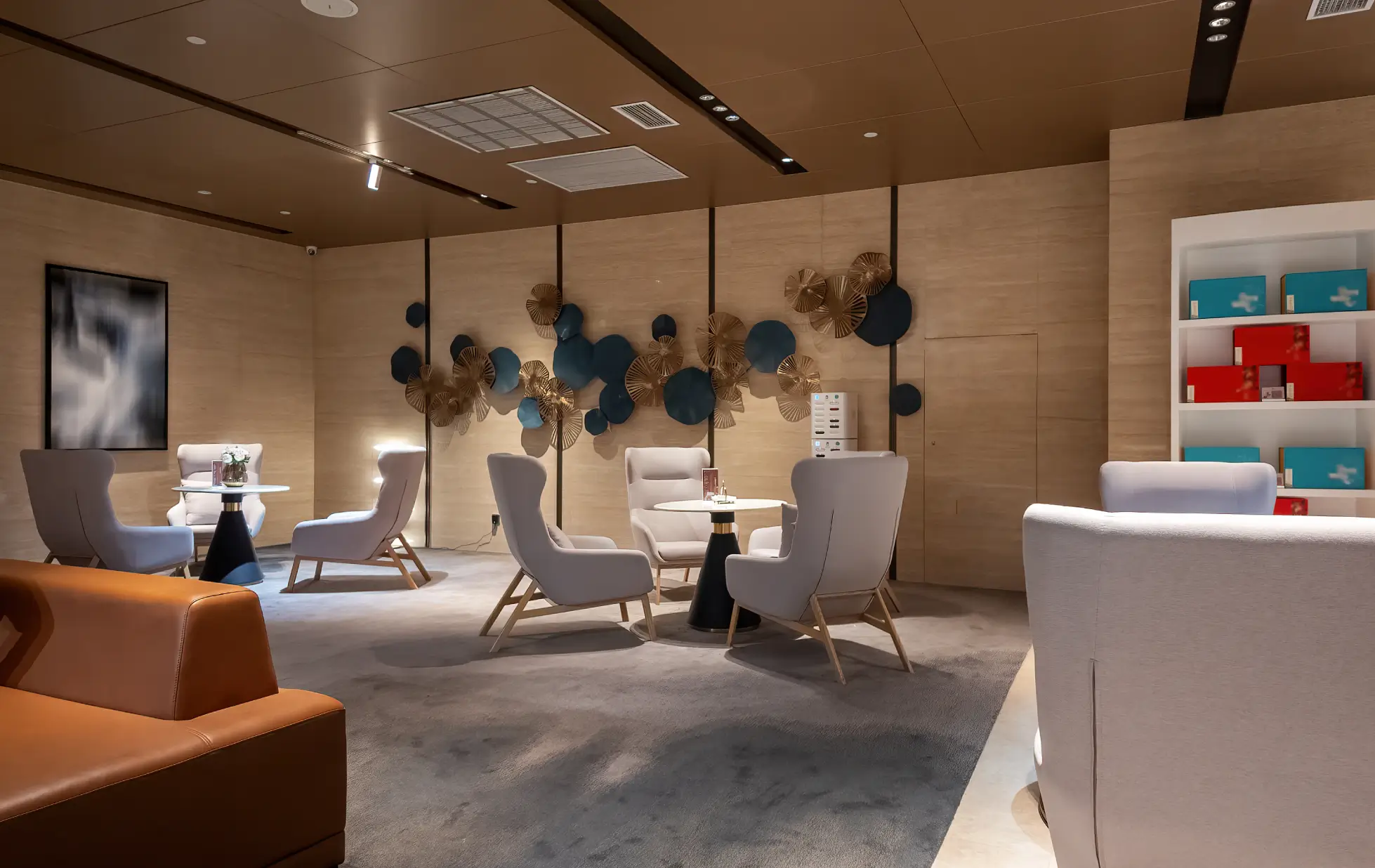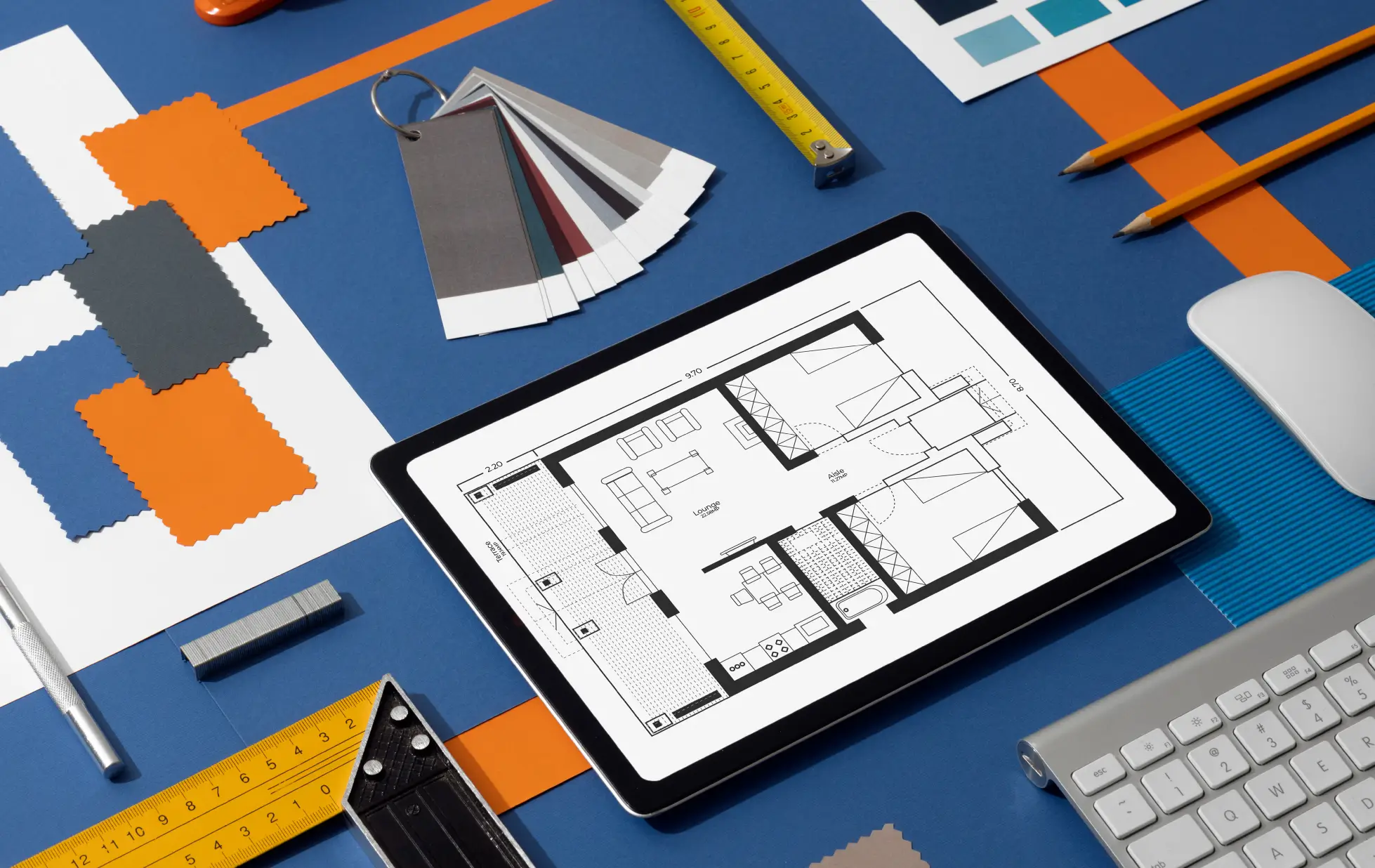By admin — 21 February 2025
Future of Co-Working Spaces: How Design is Shaping Productivity in 2025
In recent years, the demand for co-working spaces has skyrocketed as companies and entrepreneurs embrace more flexible, collaborative, and efficient work environments. As we move further into 2025, the landscape of co-working spaces continues to evolve, with design playing a pivotal role in enhancing productivity, creativity, and employee well-being. InOut Interior Designer, known for creating innovative and inspiring office environments, explores how design is shaping the future of co-working spaces and boosting productivity in the modern workplace.
The Rise of Co-Working Spaces in 2025
Co-working spaces have transformed from being just a trend to an essential part of the business ecosystem. They offer numerous advantages over traditional office spaces, such as flexibility, cost-effectiveness, and opportunities for networking. In fact, according to research, the global co-working market size is expected to reach USD 13.03 billion by 2025, growing at a compound annual growth rate (CAGR) of 16.7%.
These spaces cater to freelancers, startups, small businesses, and even large corporations seeking flexible, collaborative environments. However, as the demand for co-working spaces continues to grow, the role of design in these spaces is more critical than ever. Well-designed spaces not only attract tenants but also influence productivity, creativity, and overall satisfaction.
Designing for Flexibility and Collaboration
One of the key elements driving the future of co-working spaces is flexibility. In 2025, the design of co-working spaces is expected to be more adaptable, allowing businesses to easily scale, reconfigure, and adjust their spaces according to their changing needs. Modular furniture, movable partitions, and open-plan layouts will become more prevalent, giving employees the ability to customize their workspaces to foster collaboration or focus.
-
Open vs. Private Workspaces
The hybrid model will continue to thrive in 2025, balancing open, collaborative work areas with quiet zones for focused tasks. A mix of open desks, private meeting rooms, and lounges will allow members to choose the type of environment best suited to their work. The flexibility to switch between these areas based on tasks or team collaborations ensures that employees can be both productive and comfortable.
-
Interactive Spaces for Collaboration
Collaborative spaces will feature interactive furniture, whiteboards, and touch-screen displays that encourage teamwork and brainstorming. These areas will be designed to create an atmosphere where spontaneous discussions and creative ideas can flourish. Furthermore, integrated technology, such as high-speed internet, smart boards, and video conferencing tools, will be seamlessly embedded into these spaces, making virtual meetings and global collaboration easy.
The Role of Biophilic Design in Boosting Productivity
Biophilic design—incorporating elements of nature into the built environment—is another critical trend shaping co-working spaces in 2025. Studies have shown that biophilic design improves mental well-being, reduces stress, and enhances cognitive function. In co-working spaces, the use of natural materials, plants, and green spaces is being integrated to help employees feel more connected to nature, ultimately boosting productivity.
-
Nature-Inspired Elements
Large windows that allow for ample natural light, indoor plants, and the use of wood and stone materials in furniture and decor will become more common in co-working spaces. These elements will not only enhance the aesthetic appeal of the space but also contribute to improved air quality and a calming atmosphere. A well-balanced blend of natural and artificial lighting will ensure that employees can work efficiently without eye strain or fatigue.
-
Green Spaces and Outdoor Areas
The future of co-working spaces will also see more outdoor workspaces, allowing employees to step outside and get some fresh air while working. Gardens, terraces, and rooftop lounges will offer relaxing areas where people can take breaks, recharge, and connect with nature.
Wellness and Comfort: A Top Priority
As employees spend long hours working in co-working spaces, wellness and comfort will be key factors in improving productivity. The future design of co-working spaces will place a stronger emphasis on ergonomics, employee well-being, and mindfulness.
-
Ergonomic Furniture
Comfort will be central to office design in 2025, with ergonomic furniture designed to support the body and improve posture. Adjustable chairs, standing desks, and keyboard placements will become standard to reduce physical strain and encourage healthier work habits.
-
Wellness Rooms
Co-working spaces will also feature wellness rooms designed for relaxation, meditation, and mental health breaks. These rooms will be equipped with calming elements such as soft lighting, soothing sounds, and comfortable seating to help employees unwind and destress. Regular breaks will be promoted to ensure that employees can maintain high levels of energy and focus throughout the day.
-
Mindfulness Zones
Mindfulness spaces will also gain popularity, where individuals can engage in activities such as yoga, breathing exercises, or even quick naps to recharge their mental energy. These spaces are designed to foster creativity, reduce anxiety, and prevent burnout.
The Integration of Smart Technology
As we look to the future, the role of technology in co-working spaces will only increase. Smart technologies will be integrated into every aspect of co-working space design, enhancing productivity, convenience, and comfort.
-
IoT-Enabled Spaces
In 2025, co-working spaces will become more automated through the Internet of Things (IoT). Smart thermostats, lights, and air conditioning systems will adjust based on occupancy and weather conditions, improving the overall environment. Members will be able to control their space with mobile apps, from adjusting lighting and temperature to booking meeting rooms.
-
Smart Furniture and Devices
The integration of smart furniture and devices will enable seamless connectivity and interaction. For example, desks with built-in wireless charging stations, Bluetooth speakers, and screens will help users stay connected and organized. Additionally, co-working spaces will incorporate augmented reality (AR) and virtual reality (VR) technologies, enabling immersive work experiences and remote collaboration.
Sustainability and Eco-Friendly Practices
Sustainability is becoming increasingly important in every sector, and the design of co-working spaces is no exception. As more businesses focus on reducing their carbon footprint, co-working spaces in 2025 will adopt eco-friendly practices and sustainable design principles.
-
Energy-Efficient Design
Co-working spaces will be designed to be energy-efficient, with the use of sustainable materials, energy-saving lighting, and renewable energy sources such as solar panels. These spaces will also incorporate water-saving technologies and reduce waste through recycling and composting initiatives.
-
Sustainable Furnishings
The future of co-working space design will involve the use of sustainable and ethically sourced furniture and decor. From reclaimed wood desks to upcycled office supplies, sustainable furnishings will reduce environmental impact while maintaining a stylish and functional workspace.
Conclusion: A Vision for the Future of Workspaces
As we move into 2025, co-working spaces are evolving into dynamic, flexible environments designed to optimize productivity, creativity, and well-being. With a focus on design, technology, and sustainability, the co-working spaces of the future will offer employees a more personalized, collaborative, and comfortable work experience.
InOut Interior Designer is at the forefront of this transformation, bringing innovative design solutions that meet the demands of modern businesses. Whether you're looking to create a co-working space that fosters collaboration or one that prioritizes wellness and comfort, InOut Interior Designer is here to help you create the perfect environment for success.
The future of co-working spaces is bright, and with the right design elements, these spaces will continue to shape the future of work, one innovative and productive design at a time.
 14 February 2025
14 February 2025



